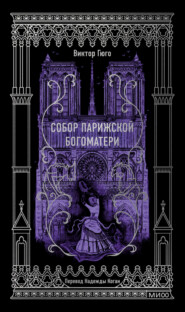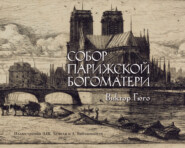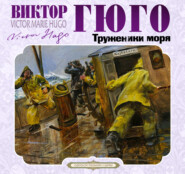По всем вопросам обращайтесь на: info@litportal.ru
(©) 2003-2024.
✖
Les Misérables, v. 2
Настройки чтения
Размер шрифта
Высота строк
Поля
The moon threw a bright light upon this open space, and Jean Valjean hid himself in a doorway, calculating that if the men were still following him he could not fail to have a good look at them as they crossed the open space. In fact, three minutes had not elapsed when the men appeared. There were now four of them, all tall, dressed in long brown coats and round hats, and holding large sticks in their hands. They were no less alarming through their stature and huge fists, than through their sinister movements in the darkness; they looked like four spectres disguised as citizens. They stopped in the centre of the square, and formed a group as if consulting, and apparently undecided. The leader turned and pointed with his right hand in the direction Jean Valjean had taken, while another seemed to be pointing with some degree of obstinacy in the opposite direction. At the moment when the first man turned the moon lit up his face brilliantly, and Jean Valjean recognized Javert perfectly.
CHAPTER II
IT IS FORTUNATE THAT THE BRIDGE OF AUSTERLITZ WILL CARRY WAGONS
Uncertainty ceased for Jean Valjean; but fortunately it still lasted with the men. He took advantage of their hesitation, for it was time lost by them and gained by him. He left the gateway in which he was concealed, and pushed on along the Rue des Postes toward the region of the Jardin des Plantes. As Cosette was beginning to feel tired, he took her in his arms and carried her. No one was passing, and the lamps had not been lit, on account of the moon. He doubled his pace, and in a few strides reached the Goblet pottery, on the front of which the moonshine made the old inscription distinctly visible: —
"Du Goblet fils c'est içi la fabrique:
Venez choisir des cruches et des brocs:
Des pots à fleurs, des tuyaux, de la brique,
À tout venant le Cœur vend des carreaux."
He left behind him the Rue de la Clef, skirted the Jardin des Plantes, and reached the quay. Here he turned; the quay was deserted, the streets were deserted. There was no one behind him, and he breathed again. He reached the Austerlitz bridge, where a toll still existed at the time, and he handed the tollman a sou.
"It is two sous," said the man; "you are carrying a child who can walk, so you must pay for two."
He paid, though greatly vexed that his passing had given rise to any remark. A heavy wain was passing the river at the same time as himself, and also proceeding to the right bank. This was useful for him, as he could cross the whole of the bridge in its shadow. On reaching the arches of the bridge, Cosette, whose feet were numbed, asked to be put down; he did so, and took her by the hand again. After crossing the bridge, he saw a little to his right building-yards, towards which he proceeded. In order to reach them he must cross an open brilliantly-lighted space; but he did not hesitate. His pursuers were evidently thrown out, and Jean Valjean believed himself out of danger; he might be looked for, but he was not followed. A little street, the Rue du Chemin Vert St. Antoine, ran between two timber-yards; it was narrow, dark, and seemed expressly made for him, but before entering it he looked back. From the spot where he was he could see the whole length of the bridge of Austerlitz; four shadows had just come upon it, and were walking towards the right bank. The four shadows were the four men.
Jean Valjean gave a start like a recaptured animal. One hope was left him, – it was that the four men had not been upon the bridge at the moment when he crossed the large illumined space with Cosette. In that case, by entering the little street before him, he might escape, if he could reach the timber-yards, kitchen-gardens, fields, and land not yet built on. He fancied that he could trust to this little silent street, and entered it.
CHAPTER III
CONSULT THE PLAN OF PARIS IN 1727
After going three hundred yards he came to a spot where the road formed two forks, and Jean Valjean had before him, as it were, the two branches of a Y. Which should he choose? He did not hesitate, but took the right one, because the other ran towards the faubourg, that is to say, inhabited parts, while the right branch went in the direction of the country, or deserted parts. Still they did not walk very rapidly, for Cosette checked Jean Valjean's pace, and hence he began carrying her again, and Cosette laid her head on his shoulder and did not say a word. At times he looked back, while careful to keep on the dark side of the street. The first twice or thrice that he turned he saw nothing, the silence was profound, and he continued his walk with a little more confidence. All at once, on turning suddenly, he fancied that he saw something moving on the dark part of the street which he had just passed. He rushed forward rather than walked, hoping to find some side lane by which he could escape, and once again break his trail. He reached a wall, which, however, did not render further progress impossible, for it was a wall skirting a cross-lane, into which the street Jean Valjean had entered ran. Here he must make his mind up again whether to turn to the right or left. He looked to the right; the lane ran for some distance between buildings, which were barns or sheds, and then stopped. The end of the blind alley, a high white wall, was distinctly visible. He looked to the left; on this side the lane was open, and at a distance of about two hundred yards fell into a street, of which it was an affluent. On that side safety lay. At the moment when Jean Valjean turned to his left in order to reach this street, he saw at the angle formed by the street and the lane a species of black and motionless statue; it was evidently a man posted there to prevent him from passing. Jean Valjean fell back.
The part of Paris where Jean Valjean now was, situated between the Faubourg St. Antoine and la Rapée, was one of those which have been utterly transformed by those recent works which some call disfigurements, others beautifying. The fields, the timber-yards, and old buildings have been removed, and there are now brand-new wide streets, arenas, circuses, hippodromes, railway stations, and a prison, Mazas, – progress as we see with its corrective. Half a century back, in that popular language all made up of traditions which insists on calling the Institute "les Quatre Nations," and the Opéra Comique "Feydeau," the precise spot where Jean Valjean now stood was called "le Petit Picpus." The Porte St. Jacques, the Porte Paris, the Barrière des Sergents, the Porcherons, the Galiote, the Celestins, the Capucins, the Mail, the Bourbe, the tree of Cracow, Little Poland, and Little Picpus, are names of old Paris swimming on the surface of the new. The memory of the people floats on the flotsam of the past. Little Picpus, which by the way scarce existed, and was never more than the outline of a quarter, had almost the monastic look of a Spanish town. The streets were scarce paved, and hardly any houses lined them; excepting two or three streets, to which we are about to refer, all was wall and solitude. There was not a shop or a vehicle, scarce a candle lighted in the windows, and every light was put out by ten o'clock. The quarter consisted of gardens, convents, timber-yards, and kitchen-grounds, and there were a few low houses with walls as lofty as themselves. Such was the quarter in the last century; the Revolution fiercely assailed it, and the Republican board of works demolished and made gaps in it: rubbish was allowed to be shot there. Thirty years ago this quarter was disappearing under the erasure of new buildings, and now it is entirely obliterated.
Little Picpus, of which no modern map retains a trace, is very clearly indicated in the plan of 1727, published at Paris by Denis Thierry, Rue St. Jacques, opposite the Rue du Plâtre; and at Lyons by Jean Girin, Rue Mercière. Little Picpus had what we have just called a Y of streets formed by the Rue du Chemin Vert St. Antoine dividing into two branches, the left-hand one taking the name of the Petite Rue Picpus, and the right-hand that of Rue Polonceau. The two branches of the Y were joined at their summit by a sort of cross-bar called Rue Droit-mur. Any one who, coming from the Seine, reached the end of Rue Polonceau, had on his left Rue Droit-mur, turning sharply at a right angle, in front of him the wall of that street, and on his right a truncated prolongation of the Rue Droit-mur called the Cul-de-sac Genrot.
It was here that Jean Valjean was; as we said, on perceiving the black shadow standing on watch at the corner of the Rue Droit-mur and the Petite Rue Picpus, he fell back, for this phantom was doubtless watching for him. What was to be done? He had no time to retrograde, for what he had seen moving in the shadow a few moments previously in his rear was of course Javert and his squad. Javert was probably already at the beginning of the street at the end of which Jean Valjean was. Javert, according to appearances, was acquainted with this labyrinth, and had taken his precautions by sending one of his men to guard the outlet. These conjectures, which so closely resembled certainty, whirled suddenly in Jean Valjean's troubled brain like a handful of dust raised by an unexpected puff of wind. He examined the blind alley; that was barred. He examined the Rue Picpus, a sentry was there, and he saw his black shadow distinctly thrown on the white moonlit pavement. To advance was falling into this man's clutches; to fall back was throwing himself into Javert's arms. Jean Valjean felt himself caught in a net which was being slowly hauled in, and looked up to Heaven in despair.
CHAPTER IV
ATTEMPTS TO ESCAPE
In order to understand the following, the reader must form an exact idea of the Droit-mur lane, and in particular of the angle which the visitor left on his left when he turned out of the Rue Polonceau into this lane. The lane was almost entirely bordered on the right by poor-looking houses, on the left by single slim-looking edifices, composed of several corps de logis, which gradually rose from one floor to two as they approached Little Rue Picpus so that this building, which was very lofty on that side, was very low on the side of Rue Polonceau, where, at the corner to which we have alluded, it sank so low as to be only a wall. This wall did not run parallel with the lane, but formed a very deep cant, concealed by its corners from any observers in Rue Polonceau and Rue Droit-mur. From this cant the wall extended along Rue Polonceau up to a house bearing the No. 49, and in Rue Droit-mur, where it was much shorter, up to the frowning building to which we have referred, whose gable it intersected, thus forming a new re-entering angle in the street. This gable had a gloomy appearance, for only one window was visible, or, to speak more correctly, two shutters covered with sheet zinc and always closed. The description of the locality which we are now giving is strictly correct, and will doubtless arouse a very precise souvenir in the mind of the old inhabitants of the quarter.
The cant in the wall was entirely occupied by a thing that resembled a colossal and wretched gateway; it was a vast collection of perpendicular planks, the top ones wider than those below, and fastened together by long cross-strips of iron. By the side of this gate was a porte-cochère of ordinary dimensions, which had apparently been made in the wall about fifty years previously. A linden-tree displayed its branches above the cant, and the wall was covered with ivy on the side of the Rue Polonceau.
In Jean Valjean's desperate situation this gloomy building had an uninhabited and solitary look about it which tempted him. He hurriedly examined it, and said to himself that if he could only enter it he might perhaps be saved. In the centre of the frontage of this building, turned to the Rue Droit-mur, there were old leaden drain-pipes at all the windows of the different floors. The various branches which led to a central pipe formed a species of tree on the façade; these ramifications with their hundred elbows imitated those old vine branches which cling to the front of old farm-houses. This singular espalier of lead and iron branches was the first thing that caught Jean Valjean's attention. He put Cosette down with her back against a post, bidding her be silent, and hurried to the spot where the main pipe reached the ground. Perhaps there might be a way to scale it and enter the house; but the pipe was worn out, and scarce held in its cramps. Besides, all the windows of this silent house were defended by thick iron bars, even the garrets. And then the moon shone full on this front, and the man watching at the end of the street would see Jean Valjean climb up; and then what was he to do with Cosette? How was he to hoist her up a three-storied house? He gave up all idea of climbing by the pipe, and crawled along the wall to re-enter Rue Polonceau. When he reached the cant where he had left Cosette he noticed that no one could see him there. As we stated, he was safe from all eyes, no matter on what side; moreover, he was in the shadow, and then, lastly, there were two gates, which might perhaps be forced. The wall over which he saw the linden-tree and the ivy evidently belonged to a garden in which he could at least conceal himself, though there was no foliage on the trees, and pass the rest of the night. Time was slipping away, and he must set to work at once. He felt the porte-cochère, and at once perceived that it was fastened up inside and out, and then went to the other great gate with more hope. It was frightfully decrepit, its very size rendered it less solid, the planks were rotten, and the iron bands, of which there were only three, were rusty. It seemed possible to break through this affair. On examining this gate, however, he saw that it was not a gate; it had no hinges, lock, or partition in the centre; the iron bands crossed it from side to side without any solution of continuity. Through the cracks of the planks he caught a glimpse of coarsely-mortared rag-stone, which passers-by might have seen ten years back. He was forced to confess to himself with consternation that this fancied gate was simply a make-believe; it was easy to pull down a plank, but he would find himself face to face with a wall.
CHAPTER V
A THING IMPOSSIBLE IN GASLIGHT
At this moment a hollow, cadenced sound began to grow audible a short distance off, and Jean Valjean ventured to take a peep round the corner of the street. Seven or eight soldiers were entering the street. He could see their bayonets gleaming, and they were coming toward him. These soldiers, at the head of whom he distinguished Javert's tall form, advanced slowly and cautiously, and frequently halted; it was plain that they were exploring all the corners and all the doors and lanes. It was – and here conjecture could not be wrong – some patrol which Javert had met and requested to assist him. Judging from the pace at which they marched, and the halts they made, they would require about a quarter of an hour to reach the spot where Jean Valjean was. It was a frightful thought; a few moments separated Jean Valjean from the awful precipice which yawned before him for the third time. And the galleys were now not merely the galleys, but Cosette lost forever; that is to say, a life resembling the interior of a tomb.
There was only one thing possible. Jean Valjean had one peculiarity, that he might be said to carry two wallets; in one he had the thoughts of a saint, in the other the formidable talents of a convict, and he felt in one or the other as opportunity offered. Among other resources, owing to his numerous escapes from the Toulon galleys, he had become a perfect master in the incredible art of raising himself without ladder or cramping irons, and by his mere muscular strength, and holding on by his shoulders and knees, in the right angle of a wall, to the sixth floor if necessary, – an art which rendered so terrible and so celebrated that corner of the yard in the Paris Conciergerie by which the condemned convict Battemolle escaped twenty years ago. Jean Valjean measured the height of the wall above which he saw the linden-tree, and found that it was about eighteen feet. The lower part of the angle which it made with the gable end of the large building was filled up with a triangular mass of masonry, very common in Parisian corners. This mass was about five feet high, and the space to be cleared from the top of it was not more than fourteen; but the difficulty was Cosette, for she could not climb a wall. Abandon her? Jean Valjean did not think of it, but carrying her was impossible; a man requires his whole strength to carry out such an ascent, and the slightest burden would displace his centre of gravity and hurl him down. He required a rope, but he had none. Where was he to find a rope at midnight in the Rue Polonceau? Assuredly at this moment if Jean Valjean had possessed a kingdom he would have given it for a rope. All extreme situations have their flashes, which at one moment blind, at another illumine us. Jean Valjean's desperate glance fell on the lamp-post in the blind alley. In those days there were no gaslights in the streets of Paris; at nightfall lamps were lit at regular distances, which were pulled up and down by a rope that crossed the street and fitted into a groove in a post. The end of the rope was kept in an iron box under the lantern, of which the lamp-lighter had the key, and the rope itself was protected by a metal case. Jean Valjean leaped across the street, burnt the lock of the box with the point of his knife, and a moment later was again by Cosette's side holding a rope. Such gloomy finders of expedients when struggling with fatality set rapidly to work. We have mentioned that the lamps were not lit on this night; the one in the blind alley therefore was naturally extinguished, and any one might have passed close without noticing that it was no longer in its place.
The hour, the place, the darkness, Jean Valjean's preoccupation, his singular gestures, his coming and going, were all beginning to alarm Cosette. Any other child would have begun crying kindly long before; but she confined herself to pulling the skirt of his coat. The noise of the approaching patrol constantly became more distinct.
"Father," she whispered, "I am frightened; who is coming?"
"Silence," the unhappy man replied; "it is Madame Thénardier."
The child trembled, and he added, —
"Do not say a word, but leave me to act: if you cry out or sob she will catch you and take you back again."
Then, without hurry, but without doing anything twice over, with a firm and sharp precision, which was the more remarkable at such a moment, when the patrol and Javert might be instantly expected, he undid his cravat, fastened it under Cosette's armpits, while careful not to hurt her, fastened the rope to the cravat, took the other end in his teeth, took off his shoes and stockings, which he threw over the wall, and began raising himself in the corner of the wall with as much certainty as if he had cramping irons under his heels and elbows. Half a minute had not elapsed ere he was astride the coping. Cosette looked at him in stupor, without saying a word; for Jean Valjean's mention of the landlady's name had frozen her. All at once she heard Jean Valjean say to her in a very low voice, —
"Lean against the wall."
She obeyed.
"You must not say a word, or feel frightened," he continued.
And she felt herself lifted from the ground, but before she had time to look round she found herself on the top of the wall. Jean Valjean placed her on his back, took her two little hands in his left hand, and crawled along the wall till he reached the cant. As he had suspected, there was a building here, whose roof began at the top of the bastard gate and descended in a gentle slope nearly to the ground, grazing the linden-tree. This was a fortunate circumstance, for the wall was much higher on this side than on that of the street, and Jean Valjean could scarce see the ground, so far was it beneath him. He had just reached the sloping roof, and had not yet loosed his hold of the coping, when a violent uproar announced the arrival of the patrol, and he heard Javert's thundering voice, —
"Search the blind alley; all the streets are guarded, and I will wager that he is in it."
The soldiers rushed forward into the alley Genrot. Jean Valjean slipped down the roof, still supporting Cosette, reached the linden-tree, and leaped on the ground. Either through terror or courage the child had not said a word; her hands were only slightly grazed.
CHAPTER VI
THE BEGINNING OF AN ENIGMA
Jean Valjean found himself in a large garden of most singular appearance, one of those gloomy gardens that appear made to be looked at in winter, and by night. This garden was of an oblong shape, with a walk of tall poplars at the end, tall shrubs in the corner, and an unshadowed space, in the centre of which an isolated tree could be distinguished. There were also a few stunted fruit-trees bristling like brambles, vegetable plots, a melon-bed, whose frames glistened in the moonlight, and an old well. Here and there were stone benches that seemed black with moss; the walks were bordered with small gloomy-looking and upright shrubs; grass covered one half of the walks, and a green mould the other half.
Jean Valjean had by his side the building by help of whose roof he had descended, a pile of fagots, and behind the latter, close to the wall, a stone statue whose mutilated face was merely a shapeless mask appearing indistinctly in the darkness. The building was a species of ruin, containing several dismantled rooms, of which one was apparently employed as a shed. The large edifice of the Rue Droit-mur had two façades looking into this garden at right angles, and these façades were even more melancholy than those outside. All the windows were barred, and not a single light could be seen, while at the upper window there were scuttles as in prisons. One of these frontages threw its shadow upon the other, which fell back on the garden like an immense black cloth. No other house could be noticed, and the end of the garden was lost in mist and night. Still, walls could be indistinctly noticed intersecting each other, as if there were other gardens beyond, and the low roofs in the Rue Polonceau. Nothing more stern and solitary than this garden could well be imagined; there was no one in it, as was natural at such an hour, but it did not look as if the spot were made for any one to walk in even in bright daylight.
Jean Valjean's first care was to put on his shoes and stockings again, and then enter the shed with Cosette. A man who is escaping never considers himself sufficiently concealed, and the child, who was still thinking of Madame Thénardier, shared his instinct for concealment. Cosette trembled and clung close to him: for she could hear the tumultuous noise of the patrol searching the street and lane, the blows of musket-butts against the stones, Javert's appeals to the men whom he had posted, and his oaths, mingled with words which could not be distinguished. At the expiration of a quarter of an hour this species of stormy grumbling appeared to be retiring, and Jean Valjean could scarce breathe. He had gently laid his hand on Cosette's mouth. The solitude in which he found himself was so strangely calm, however, that the furious uproar so close at hand did not even cast the shadow of a trouble over it. All at once in the midst of this profound calm a new sound burst forth, – a heavenly, divine, ineffable sound, as ravishing as the other had been horrible. It was a hymn, that issued from the darkness, a dazzling blending of prayer and harmony in the dark and fearful silence of the night: female voices, but composed at once of the pure accent of virgins and the simple voices of children, – such voices as do not belong to earth, and resemble those which the new-born still hear, and the dying begin to hear. This chant came from the gloomy building that commanded the garden, and at the moment when the noise of the demons was retiring it seemed like a choir of angels approaching in the dark. Cosette and Jean Valjean fell on their knees. They knew not what it was, they knew not where they were; but both man and child, the penitent and the innocent, felt that they must fall on their knees. The voices had this strangeness about them, that they did not prevent the edifice from appearing deserted; it seemed like a supernatural chant in an uninhabited house. While the voices sang, Jean Valjean thought of nothing else; he no longer saw the night, but an azure sky. He fancied that the wings which we all of us have within us were expanding in him. The singing ceased; it had probably lasted some time, but Jean Valjean could not have said how long, for hours of ecstasy never occupy more than a minute. All had become silent again: there was no sound in the garden, no sound in the street; that which threatened, that which reassured, all had vanished. The wind shook on the coping of the wall some dry grass, which produced a soft and melancholy sound.
CHAPTER VII
CONTINUATION OF THE ENIGMA
The night breeze had risen, which proved that it must be between one and two in the morning. Cosette said nothing, and as she was leaning her head against him, Jean Valjean fancied that she was asleep. He bent down and looked at her: her eyes were wide open, and she had a pensive look which hurt Jean Valjean. She was still trembling.
"Do you feel inclined to sleep?" he asked her.
"I am very cold," she answered; a moment after she continued, —
"Is she still there?"
"Who?" Jean Valjean asked.

















